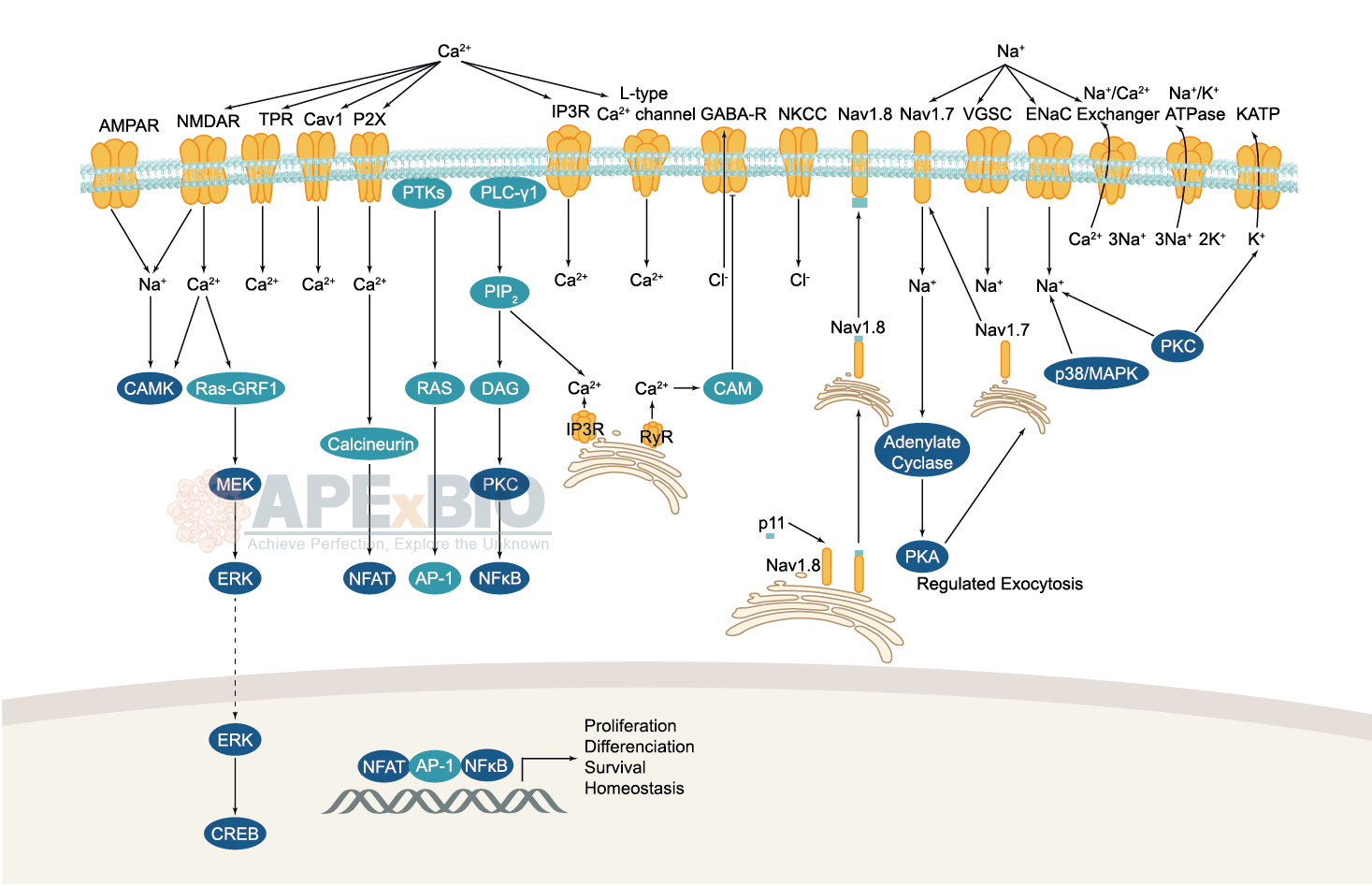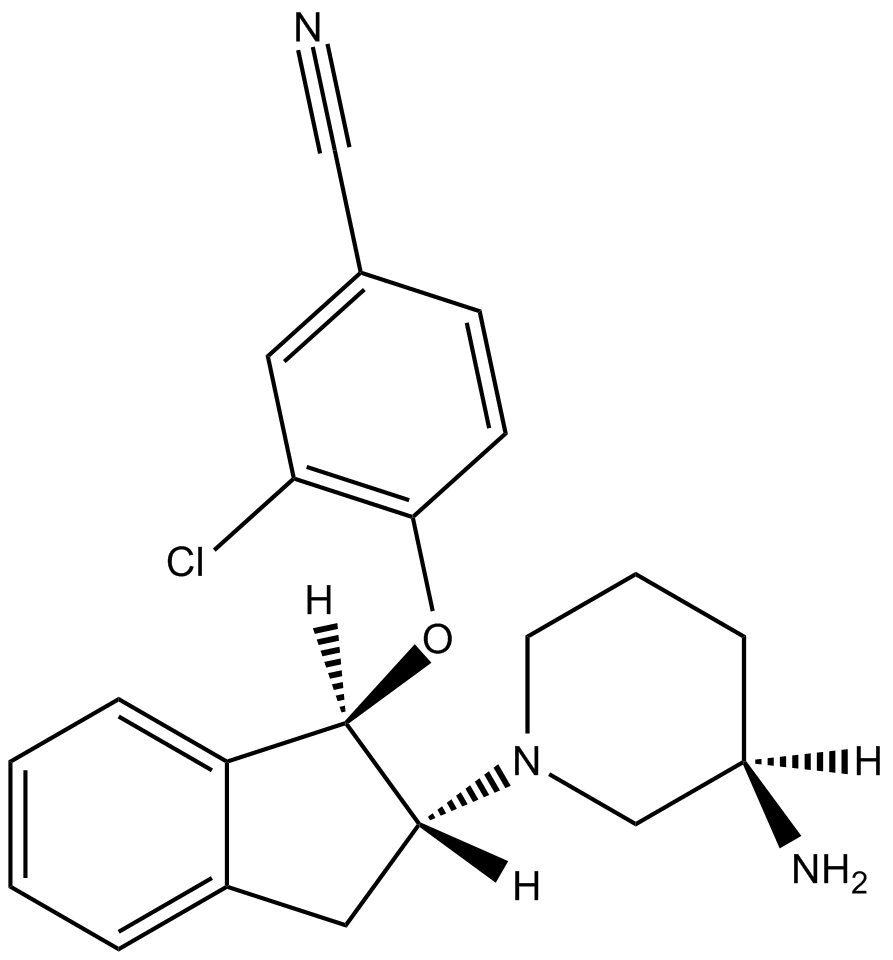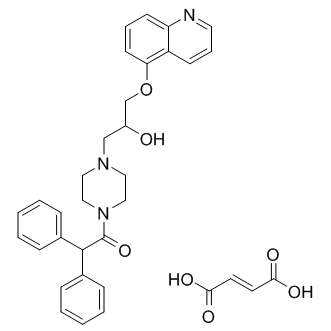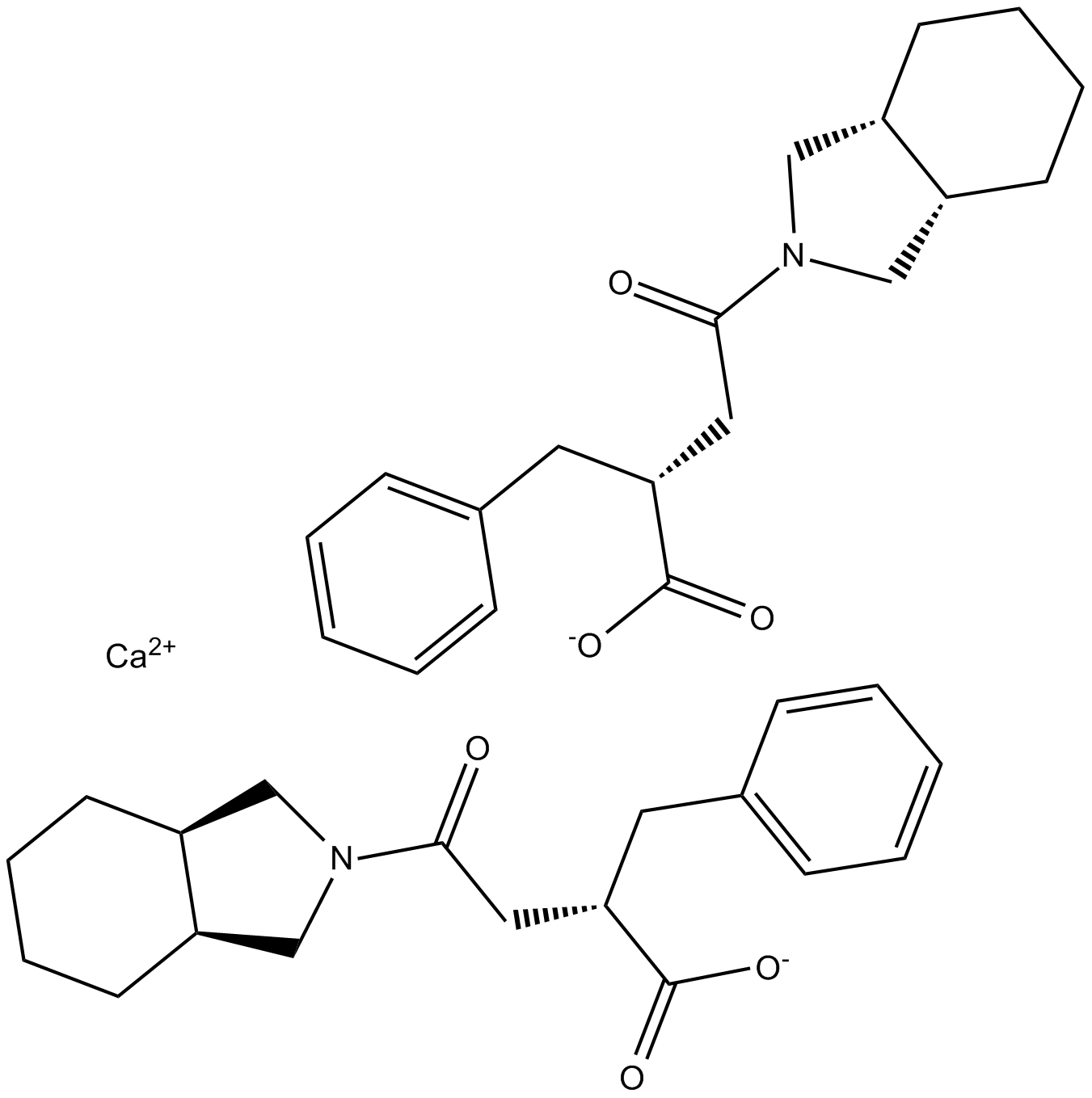Membrane Transporter/Ion Channel


Membrane Transporters mediate the movement of ions and molecules via binding and moving the substance across the membrane. There are two main actions of transporter: facilitated diffusion (passive transport) and active transport. Membrane transporters which bind the hydrolysis of ATP to the transport of target molecules are referred to as ATPases. For instance, Na+,K+-ATPases or Na+,K+-pumps are responsible for the transport of Na+ out of and K+ into cells.
Ion channels are pore-forming membrane proteins which allow the flow of ions across the membrane. The ion channels can be broadly grouped into six families including calcium channels, chloride channels, potassium channels, sodium channels, gap junction proteins and porins. Not all ion channels are gated, such as certain type of K+ and Cl– channels, transient receptor potential superfamily of cation channels, the ryanodine receptors and the IP3 receptors, but most Na+, K+, Ca2+ and some Cl– channels are all gated by voltage. Ligand-gated channels are regulated in response to ligand binding (e.g. neurotransmitters signaling). These ligand-gated neurotransmitter receptors are known as ionotropic receptors. Various neurotransmitters couple to ionotropic receptors such as glutamate, acetylcholine, glycine, GABA, and serotonin.
-
 B1627 (-)-MK 801Target: NMDA ReceptorsSummary: NMDA antagonist,potent and selective
B1627 (-)-MK 801Target: NMDA ReceptorsSummary: NMDA antagonist,potent and selective -
 B1189 SAR7334Summary: Potent TRPC6 inhibitor
B1189 SAR7334Summary: Potent TRPC6 inhibitor -
 B1038 MDL-29951Summary: Glycine antagonist of NMDA receptor activation
B1038 MDL-29951Summary: Glycine antagonist of NMDA receptor activation -
 B1475 Flupirtine maleateSummary: NMDA receptor antagonist
B1475 Flupirtine maleateSummary: NMDA receptor antagonist -
 B1167 Dofequidar fumarateSummary: MDR reversal agent
B1167 Dofequidar fumarateSummary: MDR reversal agent -
 B1388 Esomeprazole SodiumSummary: Proton pump inhibitor
B1388 Esomeprazole SodiumSummary: Proton pump inhibitor -
 B1531 (R)-baclofenTarget: GABAB ReceptorsSummary: GABA receptor agonist
B1531 (R)-baclofenTarget: GABAB ReceptorsSummary: GABA receptor agonist -
 B2193 Mitiglinide CalciumTarget: Inward Rectifier Potassium (Kir) ChannelsSummary: Potassium channel inhibitor
B2193 Mitiglinide CalciumTarget: Inward Rectifier Potassium (Kir) ChannelsSummary: Potassium channel inhibitor -
 B1419 Manidipine 2HClSummary: Calcium channel blocker
B1419 Manidipine 2HClSummary: Calcium channel blocker -
 B1415 Clevidipine ButyrateSummary: Dihydropyridine calcium channel blocker
B1415 Clevidipine ButyrateSummary: Dihydropyridine calcium channel blocker


